If you want to know about the smoke movement in building or about the lift and their components or fire-fighting in multistory developments, please click the link.
The type of construction used for a building depends on various factors, including the building’s height, occupancy, location, and use.
Types of construction
- The design of any building and the type of materials used in its construction are important factors in making the building resistant to a complete burn-out and in preventing the rapid spread of fire, smoke or fumes, which may otherwise contribute to the loss of lives and property.
- The fire resistance of a building or its structural and non-structural elements is expressed in minutes against a specified fire load which is expressed in kcal/m2, and against a certain intensity of fire.
- The fire-resistance test for structural element shall be done in accordance with accepted standards.
- For the purpose of the Code, the types of construction according to fire resistance shall be classified into four categories, namely,
- Type 1 Construction,
- Type 2 Construction,
- Type 3 Construction and
- Type 4 Construction.
- The minimum fire resistance ratings of structural and non- structural members for various types of construction shall be as given in below Table.

- Non-combustible materials should be used for construction of buildings, and the internal walls of staircase enclosures should be of brick work or reinforced concrete or any other material of construction with minimum of 120 min rating.
- The walls for the chimney shall be of Type 1 or Type 2 Construction depending on whether the flue gas temperature is above 200°C or less, respectively.
- It is required that a structural and/or non-structural element/component shall have the requisite fire resistance rating as per above Table.
- The fire resistance rating for the structural and non-structural elements shall be based on guidelines as per approved and accepted standards.
- The fire rating shall be validated and certified with a view to meeting the requirements of above Table.
- In the absence of any validated/certified rating, guidance may be obtained from the information available in below tables.


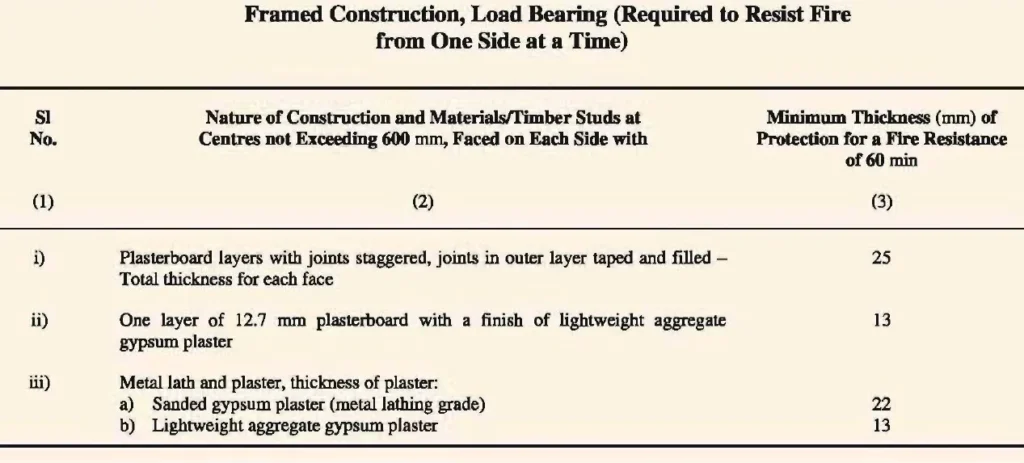



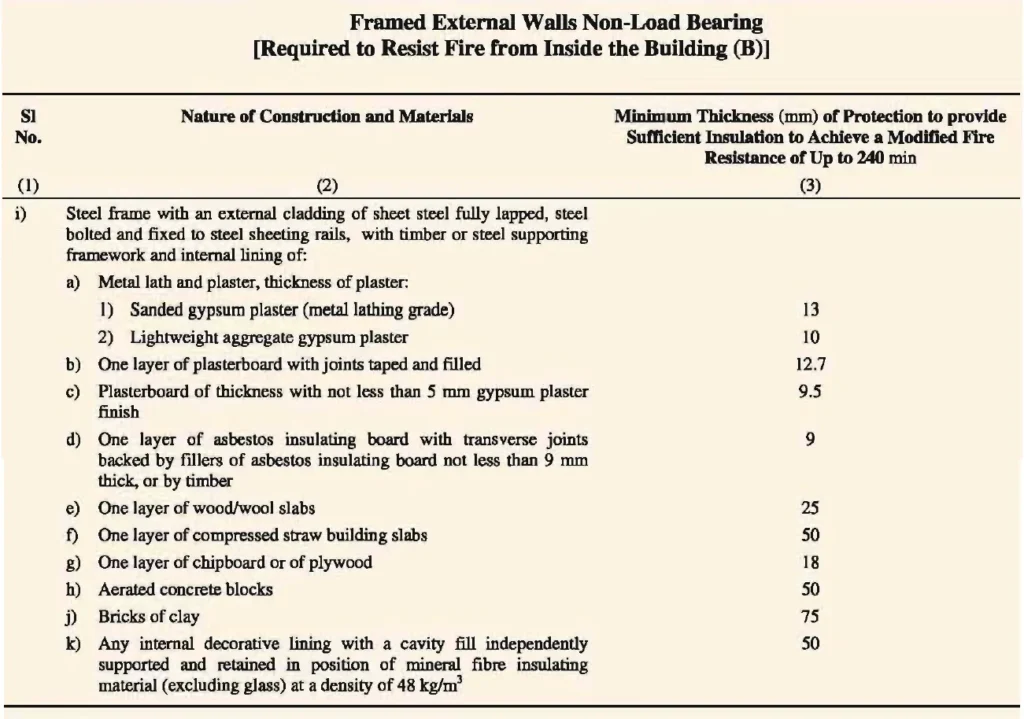

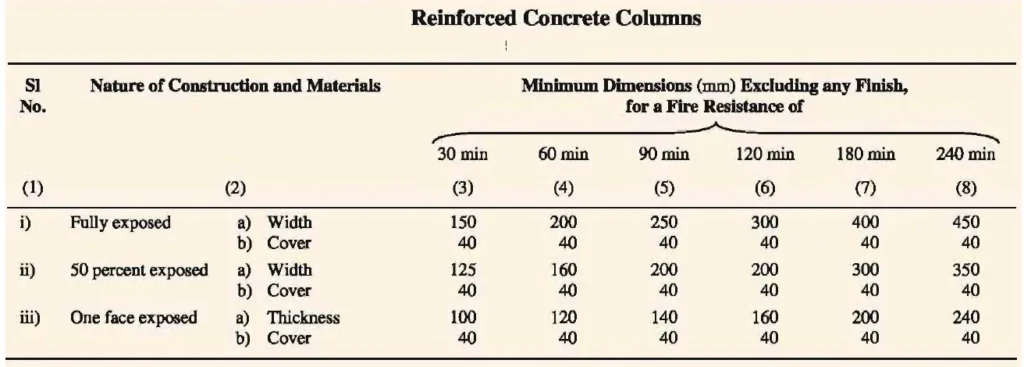
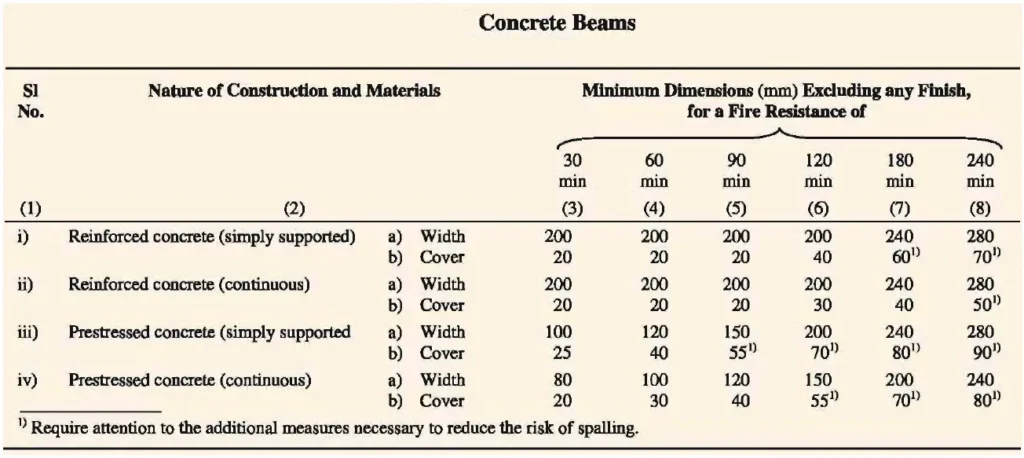




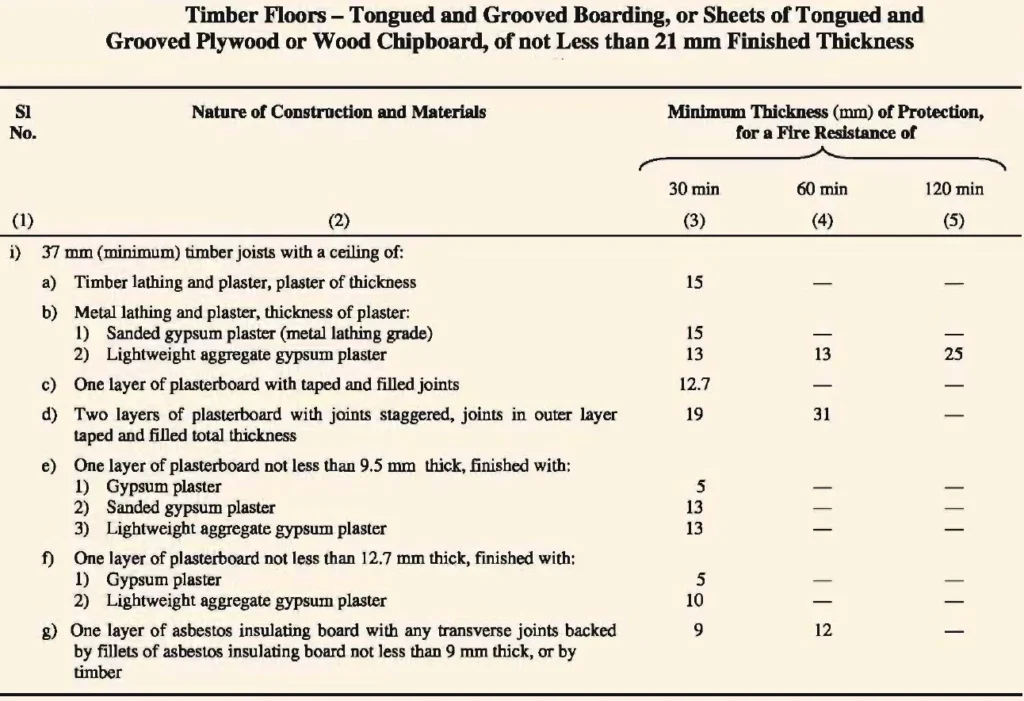


- Load bearing steel beams and columns of buildings having total covered area of 500 m2 and above shall be protected against failure/collapse of structure in case of fire.
- This could be achieved by use of appropriate methodology using suitable fire resistance rated materials along with suppression system (see above figure).
- The false ceiling, including all fixtures used for its suspension, shall be of non-combustible material and shall provide adequate fire resistance to the ceiling in order to prevent spread of fire across ceiling.
It is essential to follow the NBC guidelines to ensure the safety and durability of the building and its occupants. Buildings that are not constructed in accordance with the NBC guidelines may pose a significant risk to life and property.